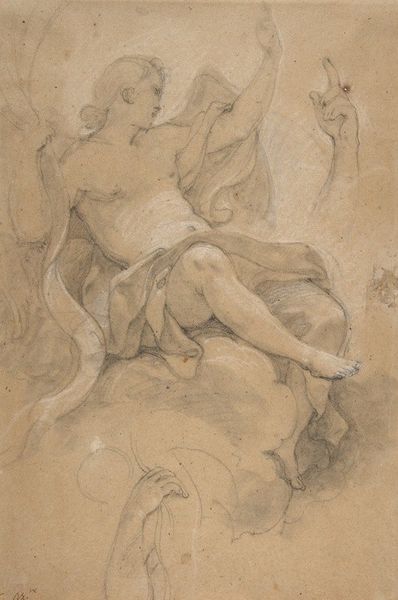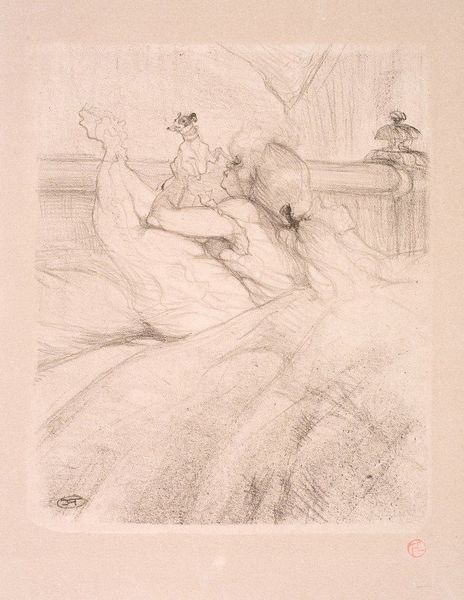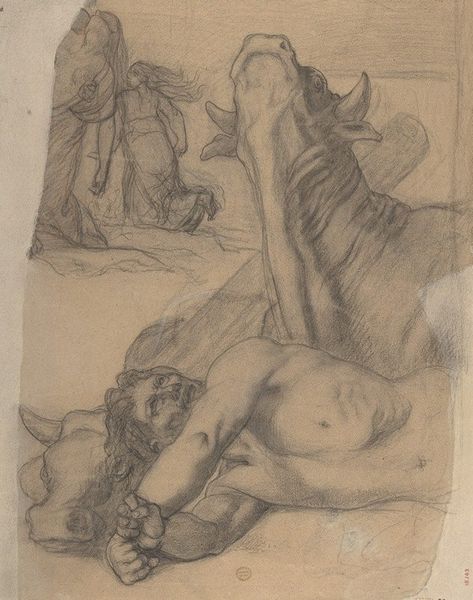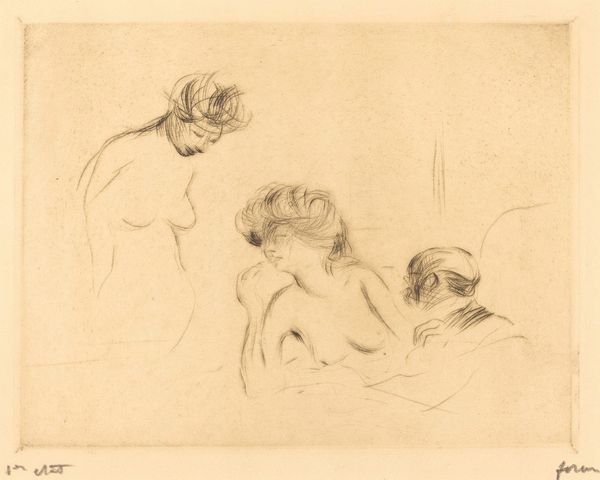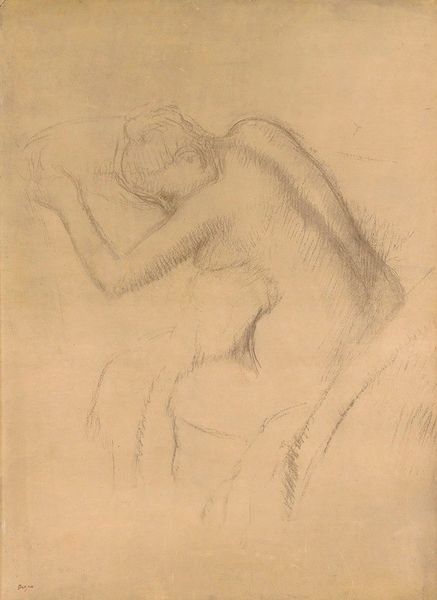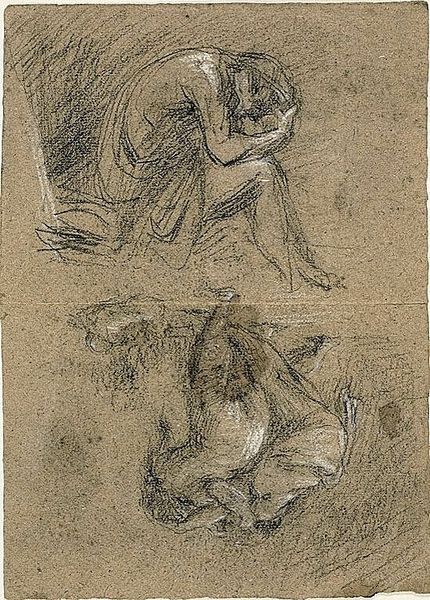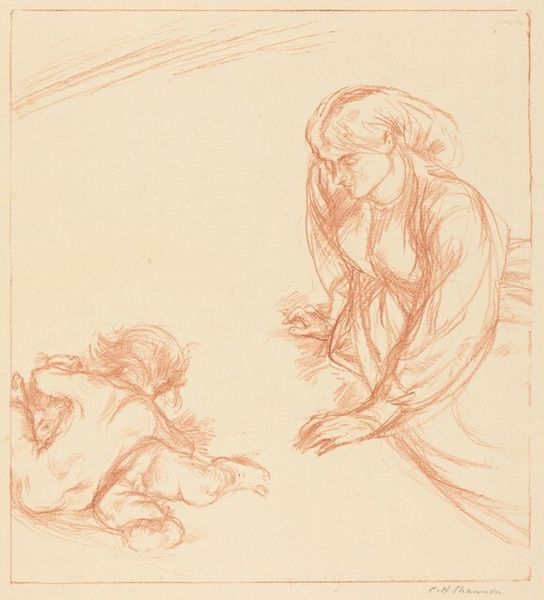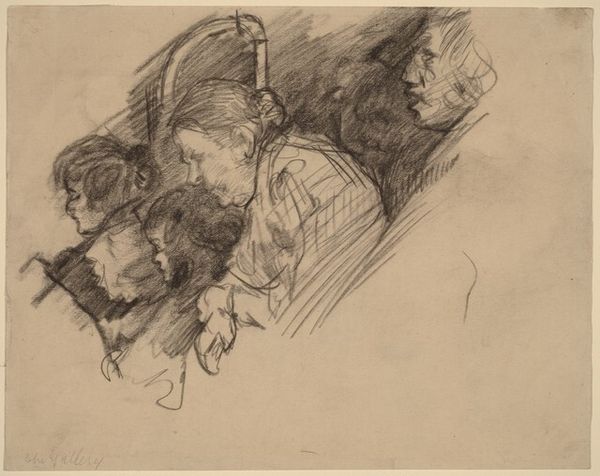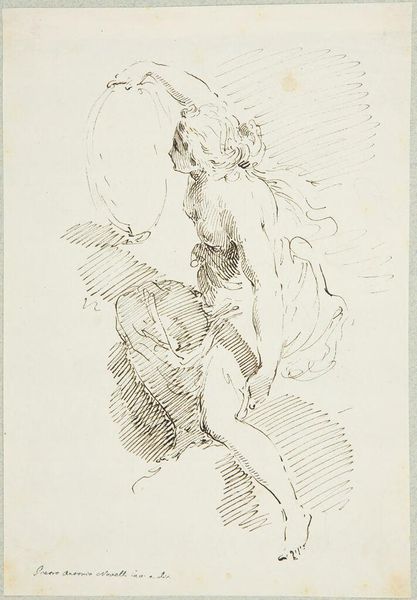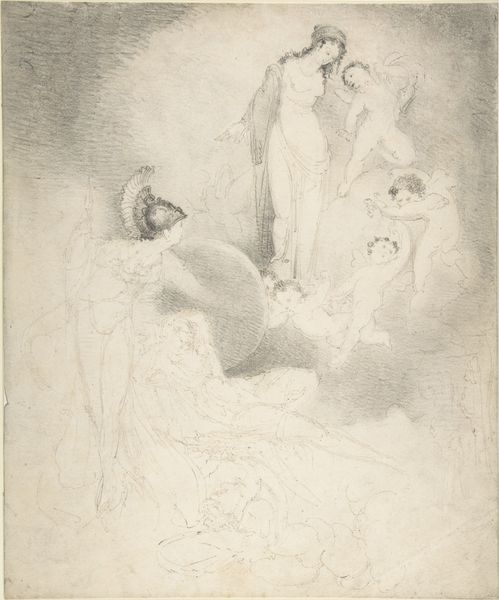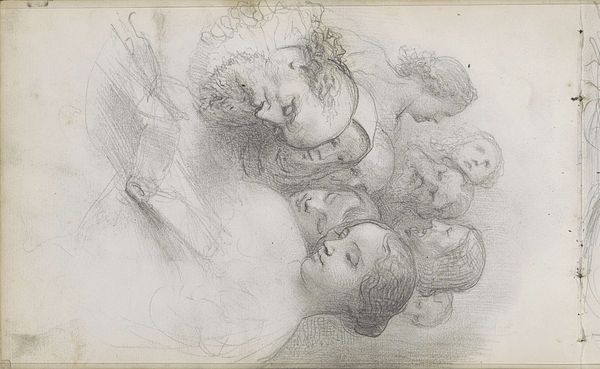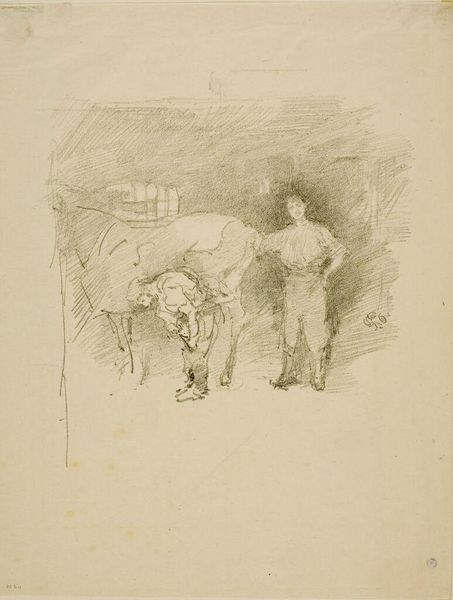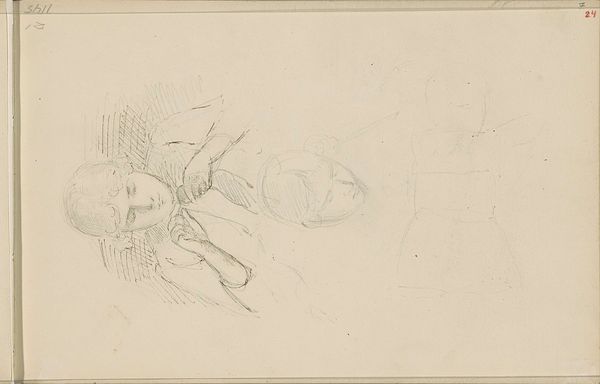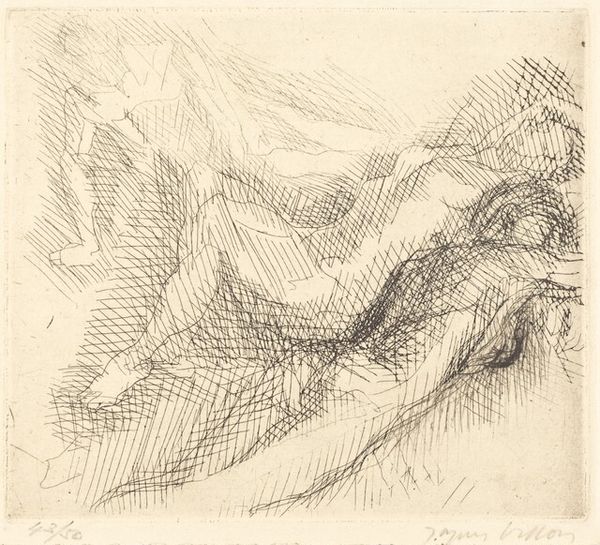
drawing, pencil
#
pencil drawn
#
drawing
#
pencil sketch
#
figuration
#
pencil drawing
#
pencil
#
line
#
surrealism
#
erotic-art
Copyright: Hans Bellmer,Fair Use
Curator: Before us we have an untitled drawing by Hans Bellmer, created in 1946 using pencil. What are your initial thoughts? Editor: There's a disquieting fragility to this. The ethereal lines barely contain the forms. It's like a half-remembered dream rendered in the lightest touch. Curator: Indeed. Bellmer is, of course, deeply concerned with the female form, fragmented and reconfigured as a vessel of subconscious desires and anxieties. Note the deliberate distortion. The poses defy naturalism, suggesting an inner psychological landscape. Editor: The layering of forms, one almost dissolving into the other, creates an unsettling sense of ambiguity. It disrupts the clarity of space and objecthood. There's no single focal point; my eye is drawn all over. It doesn't really allow a resting place, does it? Curator: It invites the viewer to question traditional notions of beauty and sexuality. The figures exist in a liminal state, simultaneously alluring and disturbing. They reflect the psychic fragmentation emblematic of the postwar era. Editor: I'm struck by the way the lines delineate both figure and ground almost equally. It denies a figure/ground relationship, challenging our expectations of perception, pushing it into a subjective perspective. Curator: And that careful detail is interesting; he suggests so much about that era with such precise control. Editor: Bellmer's work often draws upon deep-seated fears and desires surrounding female representation. It exposes cultural anxieties through symbolic deconstruction. Curator: In effect, it’s a dance between vulnerability and control, where societal constructs are dismantled. This exploration continues to prompt dialogue even now. Editor: Exactly, and that constant dialogue around such work gives it a timeless aspect which defies cultural expectation. Curator: It has indeed been revealing to explore the layers of cultural memory within Bellmer's work, seeing as it is deeply embedded in the visual and cultural landscape. Editor: Yes, it has brought attention to the aesthetic dimension of its surreal subject, which has helped me reevaluate assumptions about its nature.
Comments
No comments
Be the first to comment and join the conversation on the ultimate creative platform.
